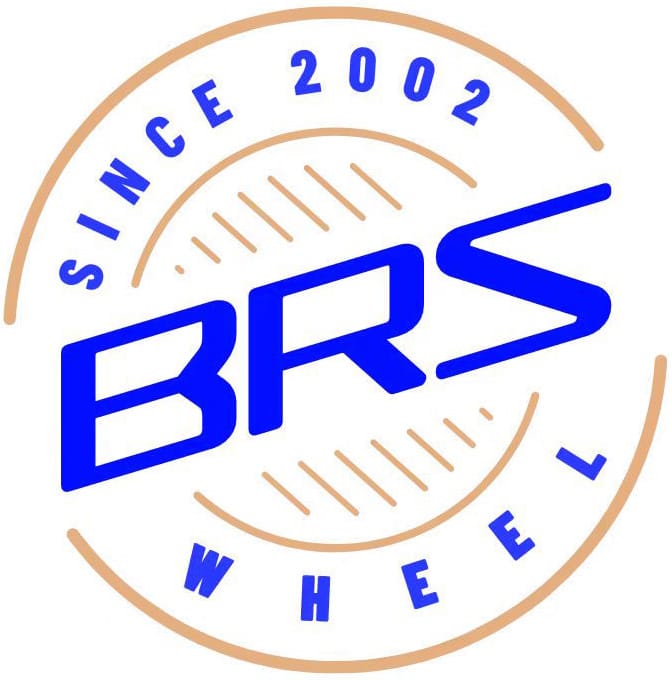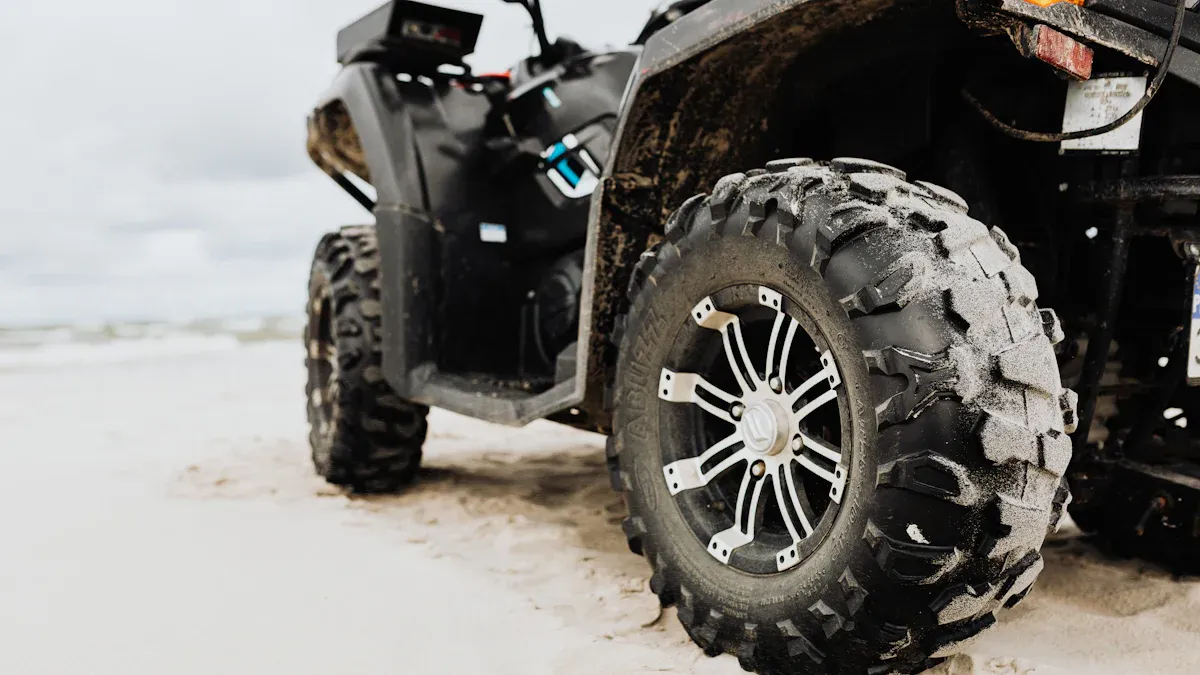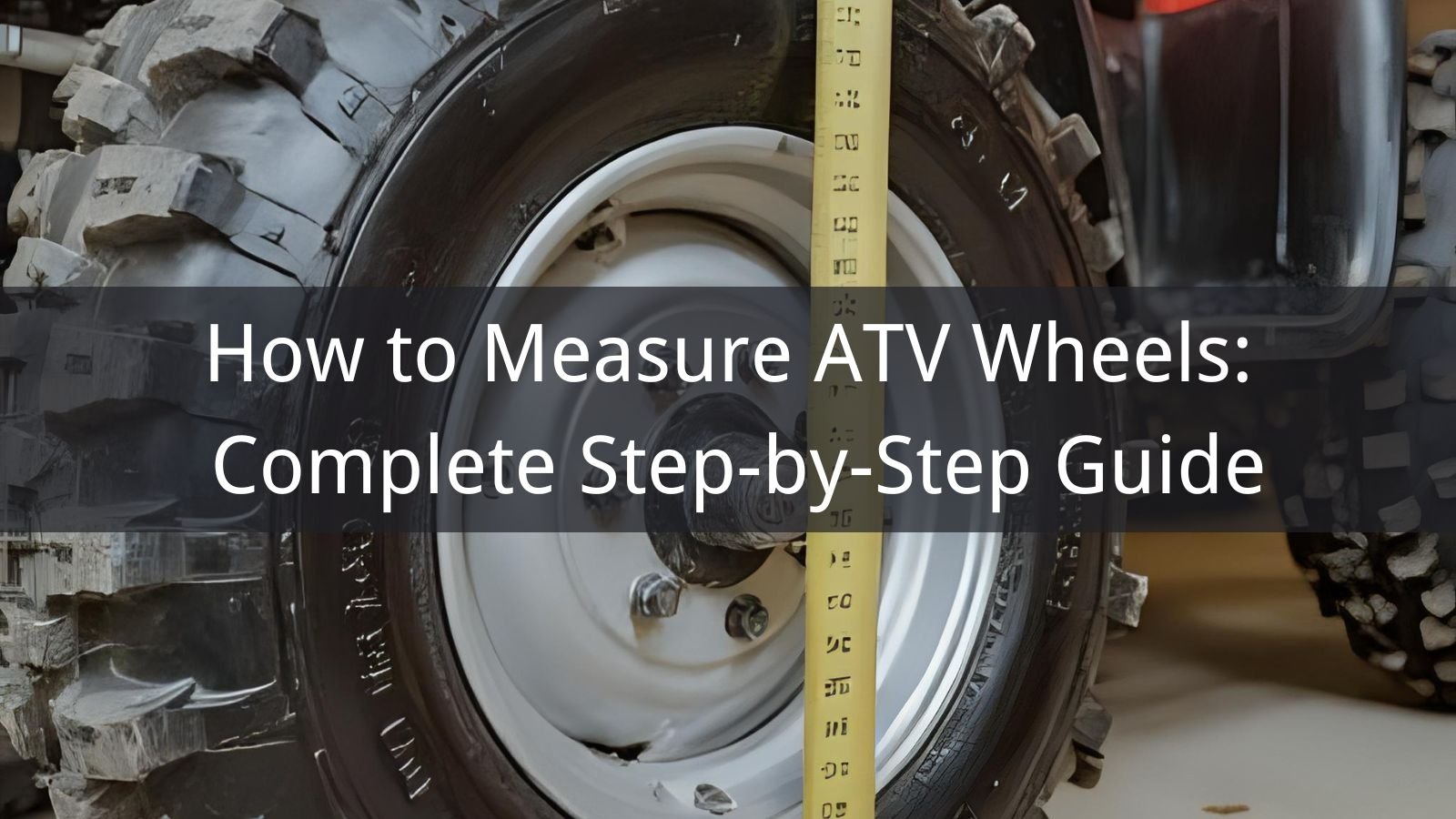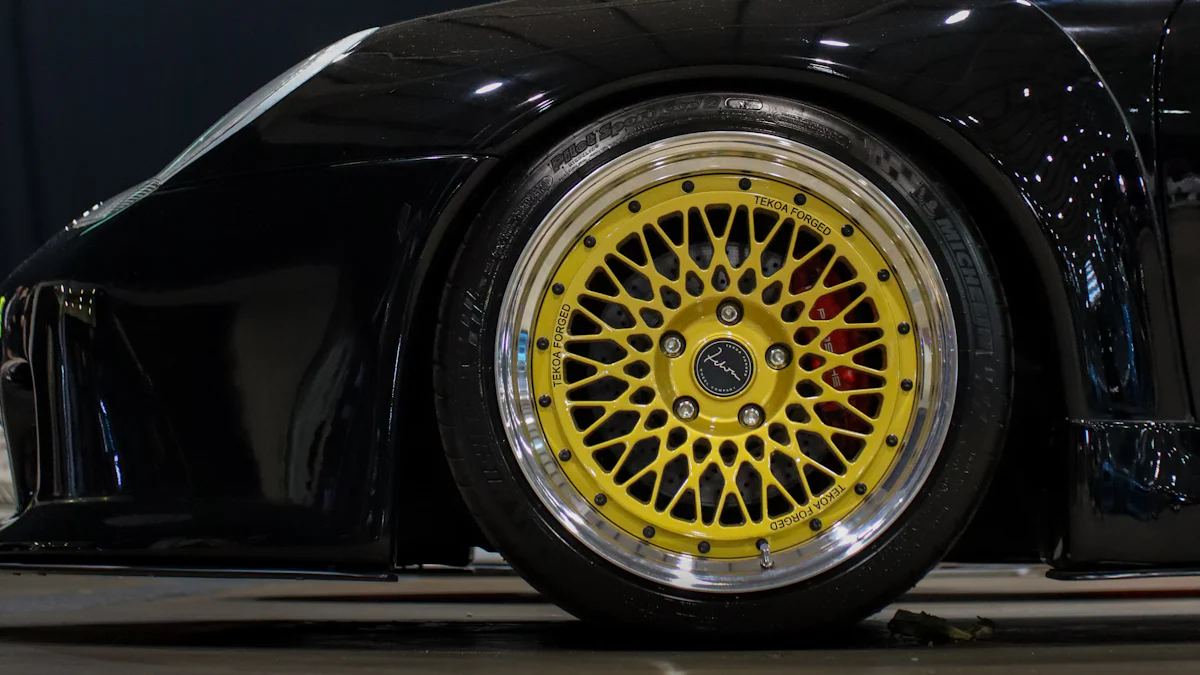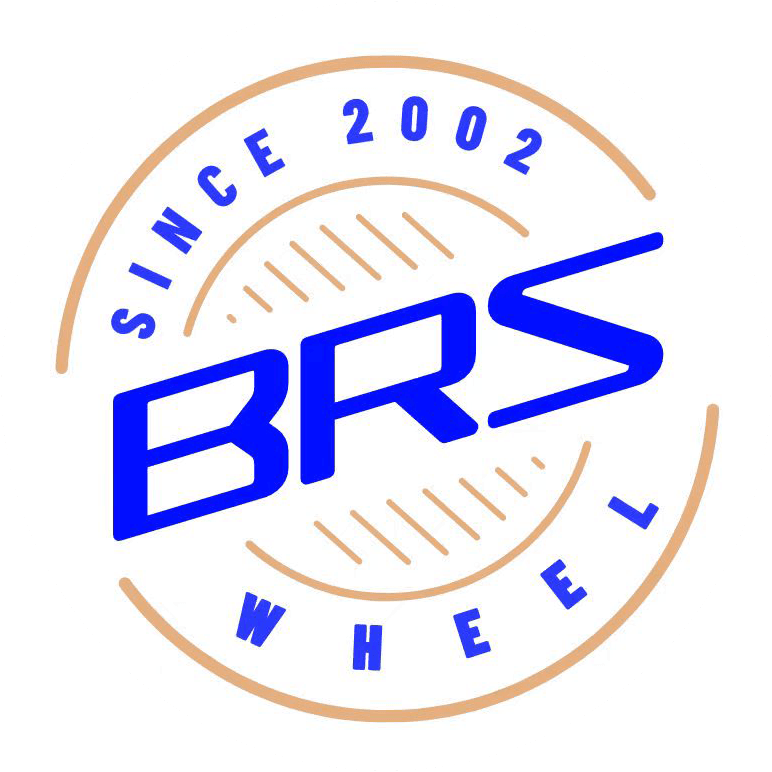
Welding offers a dependable solution to weld steel wheels and fix leaks effectively. This process ensures the structural integrity of the wheel while maintaining its durability. By applying a proper welding repair method, you can address cracks or holes in the steel wheels effectively. The repair process involves precise techniques to restore the wheel’s functionality without compromising safety. Studies show that steel can endure multiple weld repairs while retaining its mechanical properties, making welding an ideal choice for leak repairs. With the right tools and preparation, you can achieve a long-lasting fix for your weld steel wheels.
Tools and Materials for Welding Repair

When performing a welding repair on steel wheels, having the right tools and materials ensures a successful and durable fix. This section outlines the essential equipment, materials, and safety gear you need to complete the job effectively.
Essential Tools for Welding Steel Wheels
To achieve a precise and reliable welding repair, you need specific tools designed for steel welding:
- Welding machine (MIG or TIG): A MIG or TIG welding machine is crucial for repairing steel wheels. MIG welding is often preferred for its ease of use and efficiency, while TIG welding offers greater precision for intricate repairs.
- Angle grinder or wire brush: Use an angle grinder or wire brush to clean the surface of the wheel. These tools help remove rust, paint, and debris, ensuring a smooth and clean area for welding.
- Leak detection tools: Detecting the exact location of the leak is vital. Tools like soapy water or a water tank can help you identify air bubbles escaping from the damaged area.
- Clamps or a wheel stand: Stability is key during welding. Clamps or a wheel stand will hold the wheel securely in place, allowing you to focus on the repair without movement.
Materials Required for Welding Repair
The materials you use play a significant role in the quality and longevity of the repair. Ensure you have the following:
- Filler material compatible with steel: Choose a filler material that matches the composition of the steel wheel. This compatibility ensures a strong bond and prevents future cracks.
- Cleaning supplies: A degreaser and sandpaper are essential for preparing the wheel. The degreaser removes oil and grease, while sandpaper smooths the surface for better adhesion.
- Paint or rust-proof coating: After completing the welding repair, apply a protective coating. This step prevents rust and enhances the durability of the wheel.
Tip: When selecting cleaning supplies, follow industry standards like SSPC SP 1 for solvent cleaning and SSPC SP 11 for surface preparation. These guidelines ensure thorough cleaning and optimal results.
Safety Gear for Welding
Safety should always be your top priority during a welding repair. Equip yourself with the following protective gear:
- Welding helmet with auto-darkening feature: Protect your eyes and face from sparks and intense light. An auto-darkening helmet adjusts to the brightness, providing clear visibility while welding.
- Heat-resistant gloves: These gloves shield your hands from high temperatures and molten metal, ensuring safe handling of tools and materials.
- Protective clothing: Wear flame-resistant clothing with long sleeves to protect your skin from burns and sparks.
- Respirator or mask: Welding produces fumes that can be harmful when inhaled. A respirator or mask filters out toxic particles, keeping your lungs safe.
Remember: Proper safety gear not only protects you but also allows you to work confidently and efficiently.
By gathering these tools, materials, and safety equipment, you set the foundation for a successful welding repair. Each item plays a critical role in ensuring the process is smooth, safe, and effective.
Identifying the Leak in Steel Wheels
Before you begin welding, you must locate the exact source of the leak. Identifying the damaged area ensures that your repair is precise and effective. This section explains simple yet reliable methods to find leaks and how to mark them for repair.
Methods to Locate the Leak
Finding the leak in a steel wheel requires careful observation and the right tools. Here are two effective methods you can use:
Submerge the wheel in water and look for air bubbles: Fill a container large enough to hold the wheel with water. Submerge the wheel completely and observe closely. If air bubbles rise to the surface, they indicate the location of the leak. This method works well for pinpointing even the smallest cracks or holes.
Apply soapy water to the wheel and watch for bubbling: Mix water with dish soap to create a soapy solution. Spray or brush the solution onto the wheel, especially around the suspected damaged areas. Inflate the tire slightly and watch for bubbles forming on the surface. These bubbles reveal the exact spot where air escapes.
Tip: Use a grease pencil or marker to highlight the bubbling area immediately. This prevents you from losing track of the leak’s location during the repair process.
Marking the Leak for Welding Repair
Once you identify the leak, marking it accurately is essential. This step ensures that you focus on the damaged area during welding. Follow these steps to mark the leak effectively:
- Use a marker or chalk to outline the damaged area: After locating the leak, dry the wheel thoroughly to remove any water or soap residue. Use a marker, chalk, or grease pencil to draw a clear outline around the leak. This visual guide helps you stay precise during the repair.
Pro Tip: If the factory lacquer coat on the wheel has peeled off due to corrosion, clean the area before marking. Corrosion can obscure the leak and affect the quality of the repair.
By using these methods, you can confidently identify and mark the leak in your steel wheel. Proper identification and marking set the stage for a successful welding repair, ensuring that no damage goes unnoticed.
Preparing the Wheel for Welding Repair
Proper preparation of the steel wheel is essential to ensure a strong and durable weld. Cleaning the affected area and creating a smooth surface are critical steps that directly impact the quality of the repair. Follow these steps to prepare the wheel effectively.
Cleaning the Affected Area
Thorough cleaning removes contaminants that can weaken the weld. Dirt, grease, and rust must be eliminated to create a clean base for welding.
Remove dirt, grease, and debris using a degreaser.
Start by applying a high-quality degreaser to the damaged area. This step dissolves oil, grease, and other residues that may interfere with the welding process. Use a clean cloth or brush to scrub the area thoroughly. Ensure no residue remains, as even small amounts of grease can compromise the weld’s integrity.
Tip: Choose a degreaser designed for industrial use to achieve the best results. Products that meet industry standards, such as SSPC SP 1 for solvent cleaning, ensure effective removal of contaminants.
Sand or grind the area to remove rust and paint.
After cleaning, inspect the area for rust or old paint. Use sandpaper or a grinding tool to remove these layers completely. Rust and paint can prevent proper adhesion of the weld, leading to weak spots. Sanding also helps expose the bare metal, which is necessary for a strong bond.
Pro Tip: Opt for medium-grit sandpaper for initial sanding and switch to fine-grit for a smoother finish. This approach ensures thorough rust removal without damaging the steel.
Ensuring a Smooth Surface for Welding
A smooth surface allows the weld to penetrate evenly, creating a strong and reliable bond. Uneven or rough areas can lead to weak points in the repair.
Use an angle grinder or wire brush to create a clean, smooth surface.
An angle grinder or wire brush is ideal for achieving a polished surface. Run the tool over the affected area to remove any remaining imperfections. Focus on creating a uniform surface free from debris, scratches, or irregularities. This step ensures the filler material bonds seamlessly with the steel.
Scientific Insight: According to experts in welding preparation, properly cleaning and smoothing the base material is critical for achieving high-quality welds. Tools like angle grinders help eliminate impurities and imperfections, ensuring optimal results.
Reminder: Always inspect the surface after grinding. If you notice any uneven spots, repeat the process until the area is completely smooth and ready for welding.
By following these preparation steps, you set the stage for a successful welding repair. Clean and smooth surfaces not only improve the quality of the weld but also enhance the durability of the repair. Take your time during this phase to ensure the best possible outcome.
Welding Steel Wheels to Repair Leaks

Repairing leaks in steel wheels requires precision and the correct approach. By following a structured welding repair method, you can ensure a durable and effective fix. This section guides you through setting up your welding machine, applying the weld, and inspecting the final result.
Setting Up the Welding Machine
Proper setup of your welding machine is crucial for achieving a strong and reliable bond. Adjusting the settings and selecting the right materials ensures the repair process goes smoothly.
Adjust the machine settings based on the thickness of the steel.
Begin by determining the thickness of the steel wheel. This measurement helps you adjust the voltage and wire feed speed on your welding machine. For thinner steel, lower voltage and slower wire feed speed work best. Thicker steel requires higher settings to achieve proper penetration. Always refer to the machine’s manual for recommended settings based on material thickness.
Expert Tip: According to welding professionals, understanding the chemical composition and properties of the steel ensures better control over the welding process. This knowledge helps you avoid overheating or under-penetrating the material.
Use the appropriate filler material for the repair.
Choose a filler material that matches the steel composition of the wheel. Compatibility between the filler and the base metal ensures a strong bond and prevents future cracks. For most steel wheels, ER70S-6 is a common choice for MIG welding. If you’re using TIG welding, select a filler rod suitable for mild steel.
Reminder: Always clean the filler material before use. Impurities on the filler can weaken the weld and compromise its durability.
Applying the Weld
Once the machine is set up, focus on applying the weld with precision. A steady hand and attention to detail are essential for creating a strong and seamless repair.
Start welding at the edges of the leak and work inward.
Position the welding torch at the edge of the damaged area. Begin welding from the outer edges and gradually move toward the center of the leak. This technique ensures even heat distribution and prevents warping of the steel. Maintain a consistent speed and angle to create a uniform weld bead.
Pro Tip: If the leak area is large, consider using the sandblast and weld technique. Sandblasting removes surface contaminants, allowing the weld to adhere more effectively.
Ensure proper penetration to create a strong bond.
Penetration refers to how deeply the weld fuses with the base metal. Proper penetration is critical for the strength and longevity of the repair. Monitor the weld pool closely to ensure it melts both the filler material and the steel wheel evenly. Avoid moving too quickly, as this can result in shallow penetration and weak spots.
Scientific Insight: Experts emphasize that every stage of welding repair must prioritize weld quality. Proper penetration ensures the repaired area can withstand stress and maintain structural integrity.
Inspecting the Weld
After completing the weld, inspect the repaired area thoroughly. This step ensures the repair is free from defects and ready for use.
Check for gaps or weak spots and re-weld if necessary.
Examine the weld bead for any visible gaps, cracks, or uneven areas. Use a flashlight to inspect hard-to-see spots. If you find any weak points, re-weld those areas to reinforce the bond. A strong weld should appear smooth and continuous, with no signs of porosity or undercutting.
Reminder: Pay attention to the edges of the weld. These areas are prone to defects and require extra care during inspection.
By following these steps, you can successfully weld steel wheels and repair leaks with confidence. Proper setup, precise application, and thorough inspection ensure a high-quality repair that restores the wheel’s functionality and durability.
Finishing and Testing the Welding Repair
Completing the welding repair requires careful attention to detail. Smoothing the weld, applying a protective coating, and testing for leaks are essential steps to ensure the repair process delivers a durable and reliable result. Follow these steps to finish and test your work effectively.
Smoothing the Weld
After welding, the repaired area often has rough edges or excess material. Smoothing the weld ensures the surface is even and safe for use.
Use an angle grinder to smooth the welded area.
An angle grinder is an excellent tool for refining the welded surface. Attach a grinding wheel or flap disc to the grinder and gently run it over the weld. This process removes uneven spots and creates a uniform finish. Flap discs are particularly useful because they grind, finish, and blend simultaneously, making them easy to control. For more aggressive smoothing, a grinding wheel may be necessary to tackle jagged seams.
Tip: Keep the grinder moving steadily to avoid overheating the metal, which can weaken the weld.
Remove any sharp edges or excess material.
Inspect the area for sharp edges or protrusions that could pose safety risks. Use the grinder to eliminate these imperfections. A smooth surface not only enhances the appearance of the repair but also ensures the wheel functions properly without causing damage to other components.
Pro Tip: After grinding, run your hand (wearing gloves) over the surface to check for any remaining rough spots. Repeat the process if needed until the area feels completely smooth.
Applying a Protective Coating
Protecting the repaired area from rust and corrosion is crucial for maintaining the wheel’s durability. A proper coating extends the lifespan of the welding repair.
Paint the repaired area to prevent rust.
Apply a high-quality paint designed for metal surfaces. Use a brush or spray can to cover the welded area evenly. Paint acts as a barrier, shielding the steel from moisture and preventing rust formation. Choose a color that matches the rest of the wheel for a seamless look.
Reminder: Allow the paint to dry completely before moving on to the next step. Follow the manufacturer’s instructions for drying times.
Use a rust-proof coating for added durability.
For enhanced protection, apply a rust-proof coating over the painted surface. Products like anti-corrosion sprays or sealants provide an extra layer of defense against environmental factors. This step is especially important if the wheel will be exposed to harsh conditions, such as road salt or heavy moisture.
Scientific Insight: Studies show that combining paint with a rust-proof coating significantly reduces the risk of corrosion, ensuring the repair remains intact for years.
Testing the Repair for Leaks
The final step in the repair process is testing the wheel to confirm the leak has been successfully sealed. This ensures the welding repair has achieved its purpose.
Repeat the leak detection process to ensure the repair is successful.
Use the same method you employed to locate the leak initially. Submerge the wheel in water or apply soapy water to the repaired area. Inflate the tire slightly and observe for any air bubbles. If no bubbles appear, the repair is complete. If you notice any leaks, inspect the weld and reapply as needed.
Tip: Perform this test in a well-lit area to spot even the smallest bubbles. A thorough inspection guarantees the wheel is ready for use.
By following these finishing and testing steps, you can ensure the welding repair is both effective and long-lasting. Proper smoothing, coating, and testing not only enhance the quality of the repair but also provide peace of mind knowing the wheel is safe and functional.
Safety Tips for Welding Steel Wheels
Welding steel wheels can be a rewarding task, but it comes with inherent risks. Prioritizing safety ensures not only the success of your repair but also your well-being. Follow these essential safety tips to create a secure and efficient working environment.
General Safety Precautions
Always wear protective gear while welding.
Your safety gear acts as your first line of defense against potential hazards. Equip yourself with a welding helmet featuring an auto-darkening lens to shield your eyes from harmful UV rays and intense light. Heat-resistant gloves protect your hands from burns caused by molten metal or sparks. Flame-resistant clothing, such as long-sleeved shirts and pants, safeguards your skin from heat and flying debris. A respirator or mask filters out toxic fumes, ensuring you breathe clean air during the process.
Expert Insight: According to welding safety professionals, using the right protective equipment significantly reduces the risk of injuries. They emphasize that even experienced welders should never skip this step.
Work in a well-ventilated area to avoid inhaling fumes.
Welding produces fumes that can harm your respiratory system. Ensure your workspace has proper ventilation to disperse these fumes effectively. Open windows or use exhaust fans to maintain airflow. If you’re working indoors, consider using a fume extractor to capture and filter harmful particles.
Tip: Position yourself so that the fumes move away from your face. This simple adjustment minimizes your exposure to toxic gases.
Handling the Welding Machine Safely
Follow the manufacturer’s instructions for safe operation.
Every welding machine comes with specific guidelines for use. Read the manufacturer’s manual thoroughly before starting your repair. Familiarize yourself with the machine’s settings, controls, and safety features. Proper understanding of your equipment ensures smooth operation and prevents accidents.
Reminder: Regularly inspect your welding machine for any signs of wear or damage. Faulty equipment increases the risk of malfunctions, which can lead to serious injuries.
Keep flammable materials away from the work area.
Welding generates high heat and sparks, which can ignite flammable substances. Clear your workspace of items like paper, cloth, or chemicals before you begin. Store these materials in a safe location, far from the welding zone. Keep a fire extinguisher nearby as a precautionary measure.
Pro Tip: Use a welding blanket to cover nearby surfaces or objects that could catch fire. This added layer of protection ensures a safer environment.
Quote from Experts: “Welding is a valuable skill, but one wrong move can lead to serious injuries. By paying close attention to safety procedures and using the right equipment, you can significantly reduce the dangers of welding.”
By adhering to these safety tips, you can confidently tackle your welding project while minimizing risks. Remember, safety is not just a precaution—it’s a responsibility. Take the time to prepare, protect, and proceed with care.
Repairing steel wheels through welding repair is a practical and effective solution. By following the repair process step by step, you can restore the wheel’s functionality and extend its service life. Identifying the leak, preparing the surface, and applying precise welding techniques ensure a durable fix. This method not only enhances the structural integrity of the wheel but also improves its resistance to wear and corrosion. Always prioritize safety and use the right tools to achieve the best results. With patience and attention to detail, you can confidently complete the repair.
FAQ
Can you weld any type of steel wheel?
Yes, you can weld most steel wheels, but you must assess their condition first. Inspect the wheel for severe rust, cracks, or structural damage. If the damage compromises the wheel’s integrity, welding may not be a safe or effective solution. Always ensure the steel is clean and free from contaminants before starting the repair.
What type of welding is best for steel wheels?
MIG welding is often the preferred method for repairing steel wheels due to its ease of use and efficiency. TIG welding, however, provides greater precision and is ideal for intricate repairs. Choose the method that matches your skill level and the specific requirements of the repair.
How do you determine the thickness of the steel wheel?
You can measure the thickness of the steel wheel using a caliper or micrometer. This measurement helps you adjust the welding machine settings accurately. Knowing the thickness ensures proper penetration and prevents overheating or under-welding.
Is it necessary to remove the tire before welding?
Yes, you must remove the tire before welding the wheel. The heat generated during welding can damage the tire or cause it to catch fire. Removing the tire also gives you better access to the damaged area, ensuring a more precise repair.
How do you ensure the weld is strong and durable?
To ensure a strong weld, clean the surface thoroughly and remove all rust, paint, and grease. Use a filler material compatible with the steel wheel. Adjust the welding machine settings based on the steel’s thickness. Apply the weld evenly and inspect it for gaps or weak spots after completion.
Can you paint the wheel immediately after welding?
No, you should wait for the welded area to cool completely before applying paint. Painting a hot surface can cause the paint to bubble or peel. Once the area cools, clean it again to remove any residue, then apply a rust-proof coating followed by paint for added protection.
How do you test the repair for leaks?
After completing the repair, inflate the tire slightly and submerge the wheel in water. Look for air bubbles escaping from the repaired area. Alternatively, apply soapy water to the surface and watch for bubbling. If no bubbles appear, the repair is successful.
Is welding a permanent solution for steel wheel leaks?
Welding can provide a long-lasting solution if done correctly. However, the durability of the repair depends on the extent of the damage and the quality of the welding process. Regular inspections of the wheel can help you identify any future issues early.
What safety precautions should you take while welding?
Always wear protective gear, including a welding helmet, heat-resistant gloves, and flame-resistant clothing. Work in a well-ventilated area to avoid inhaling fumes. Keep flammable materials away from the workspace and have a fire extinguisher nearby for emergencies.
Can you use alternative methods instead of welding?
Yes, you can use alternatives like JB Weld or similar epoxy products for small leaks. These products work well for minor repairs but may not provide the same durability as welding. Always deflate the tire before applying any sealant to ensure proper adhesion.
- Posted In:General
